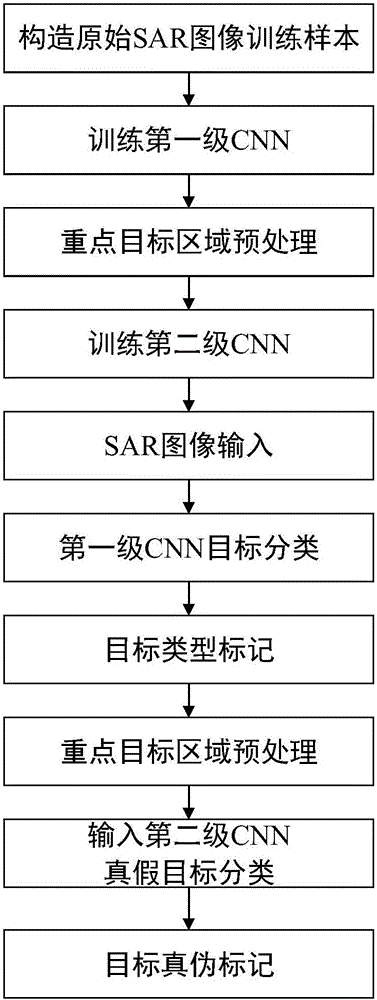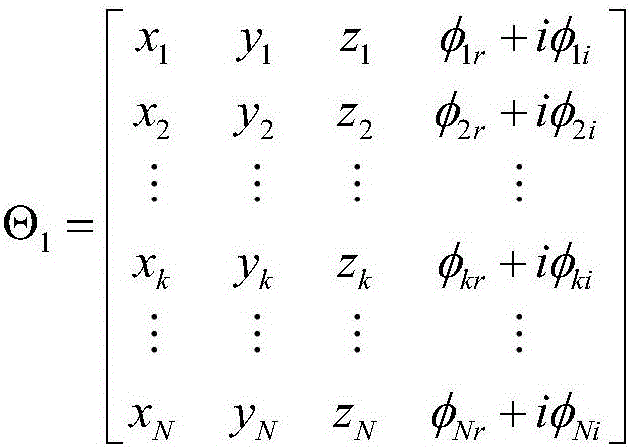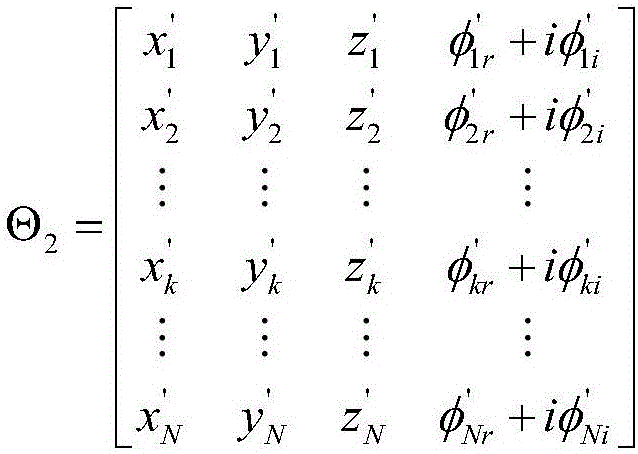Synthetic aperture radar anti-deceptive-interference method based on shadow characteristics
A synthetic aperture radar, deceptive jamming technology, applied in neural learning methods, character and pattern recognition, pattern recognition in signals, etc., can solve problems such as poor shadow feature recognition
- Summary
- Abstract
- Description
- Claims
- Application Information
AI Technical Summary
Problems solved by technology
Method used
Image
Examples
Embodiment Construction
[0123] The present invention mainly adopts the method of simulation experiment to verify, and all steps and conclusions are verified correctly on Matlab 2015b and python2.7. The specific implementation steps are as follows:
[0124] Step 1. Initialize radar system parameters
[0125] Initialize the parameters of the SAR imaging system, including: radar carrier wavelength, denoted as λ=0.0085, radar platform main antenna transmission signal bandwidth B=9×10 8 , the radar transmit pulse width T r =5×10 -9 , radar sampling frequency F s =1.12×10 9 , radar incidence angle θ=45, radar pulse repetition frequency PRF=3000, platform motion velocity vector V r =[0,100,0], the number of sampling points N in the range direction of the radar system r =2048, the number of sampling points in the azimuth direction of the radar system, denoted as N a =10000, the initial position of radar system antenna P(0)=[-6000,0,6000].
[0126] Step 2. Initialize the parameters of the SAR projecti...
PUM
 Login to View More
Login to View More Abstract
Description
Claims
Application Information
 Login to View More
Login to View More - R&D
- Intellectual Property
- Life Sciences
- Materials
- Tech Scout
- Unparalleled Data Quality
- Higher Quality Content
- 60% Fewer Hallucinations
Browse by: Latest US Patents, China's latest patents, Technical Efficacy Thesaurus, Application Domain, Technology Topic, Popular Technical Reports.
© 2025 PatSnap. All rights reserved.Legal|Privacy policy|Modern Slavery Act Transparency Statement|Sitemap|About US| Contact US: help@patsnap.com



